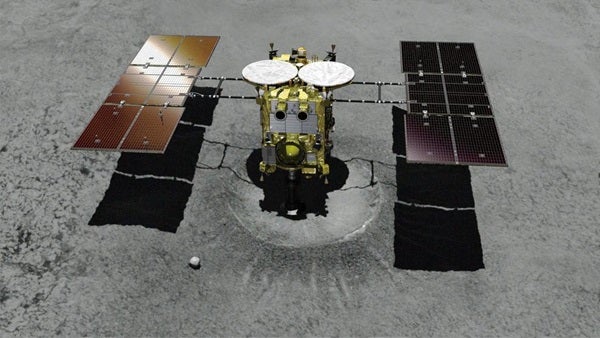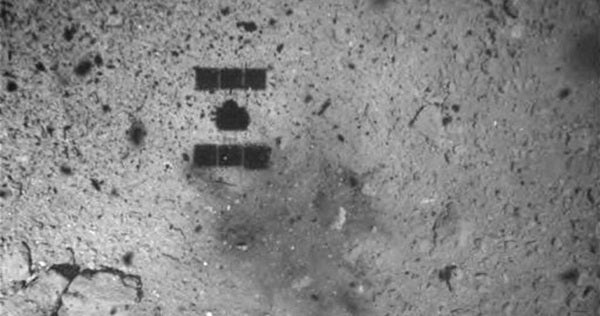Early in the morning on Dec. 6, 2020, JAXA’s Hayabusa2’s sample-return capsule streaked through the sky over Woomera, Australia. The heat-shielded capsule, packed with material blasted from the surface of asteroid Ryugu in 2018, descended toward the desert sand. After tracking the precious cargo to its landing site, scientists successfully recovered the most pristine samples ever obtained of a carbon-rich asteroid.
Scientists have begun analyzing the samples. In one recent study published Aug. 15 in Nature Astronomy, researchers discovered the first evidence that Ryugu formed from material that originated in the outer solar system. The results also support the idea that the asteroid belt (located between Mars and Jupiter) may have been populated by planetesimals from two distinct sources when the solar system was still in its infancy.
“When I obtained the initial results from my instruments, I could not believe it,” Motoo Ito, a cosmochemist at the Japan Agency for Marine-Earth Science and Technology and lead author of the latter study, tells Astronomy.
Diving deep into asteroid dust
When Ito and his colleagues cracked open and analyzed the Ryugu particle samples, they found higher abundances of heavier hydrogen and nitrogen isotopes than what is typically seen on Earth and in meteorites. Ito analyzed the sample several times using different approaches to confirm the results.
Ito’s team found that Ryugu has a composition similar to that of carbonaceous chondrite (CC) meteorites. Such objects have not experienced extensive heating, and hence are believed to have formed farther out in the solar system, beyond the orbit of Jupiter.
Carbonaceous chondrites are relatively rich in carbon and organic materials, and they contain minerals with chemically bound water, which indicates they originally contained water-ice. Non-CCs, on the other hand, are thought to have originated closer to the Sun, where temperatures would have vaporized any volatiles like water, leaving behind primarily silicate materials.
“The evidence from this study is the strongest we have so far that asteroids came from two different reservoirs,” says planetary scientist Bojan Novakovic of the University of Belgrade in Serbia, who was not involved in the study.
Some previously analyzed meteorites and interplanetary dust particles also show evidence of being from the outer solar system, but the Ryugu sample is the most pristine example recovered to date. That’s because the extraterrestrial material didn’t have to tear through our atmosphere to get to Earth — at least not unprotected.
“Exposure to the terrestrial environment is a problem,” says Ito. “The atmosphere is full of water and oxygen, and we are surrounded by organic material, so we have no idea which material is extraterrestrial.”
A cosmic trip
As for how far-flung carbonaceous chondrites ultimately ended up in the main asteroid belt, the most likely answer is that they were scattered inwards by the gas giants. Today’s solar system is well behaved, but early on, the orbits of the planets were likely migrating. The resulting gravitational interactions would have wreaked havoc on smaller bodies such as asteroids.
“Asteroids get a ‘kick’ if they have a close encounter with a planet,” says Novakovic.
Once in the main belt, the rubble from numerous past asteroid collisions would have accreted to form new amalgamated asteroids like Ryugu. Then, over time, weak but persistent thermal radiation forces, along with perturbations from Saturn’s gravity, would have nudged Ryugu even further inward, says Novakovic.
“Close encounters with Mars may have induced the final kick into near-Earth space,” he adds.
Ryugu’s journey may have happened relatively quickly in astronomical terms, perhaps tens of millions of years. Meanwhile, Hayabusa2’s round-trip journey took only seven years. That may have seemed long to researchers, but it’s a blink of the eye in cosmic terms.
“The first time I saw the sample in the chamber was surreal,” says Ito. “I had imagined for many years that these precious samples would arrive to conduct studies.”











